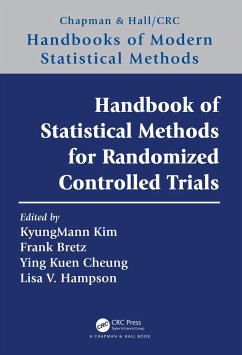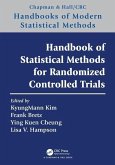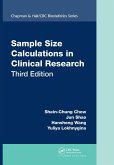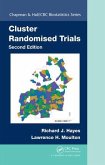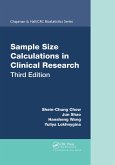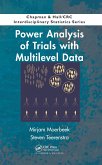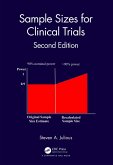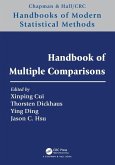Statistical concepts provide scientific framework in experimental studies, including randomized controlled trials. In order to design, monitor, analyze and draw conclusions scientifically from such clinical trials, clinical investigators and statisticians should have a firm grasp of the requisite statistical concepts. The Handbook of Statistical Methods for Randomized Controlled Trials presents these statistical concepts in a logical sequence from beginning to end and can be used as a textbook in a course or as a reference on statistical methods for randomized controlled trials.
Part I provides a brief historical background on modern randomized controlled trials and introduces statistical concepts central to planning, monitoring and analysis of randomized controlled trials. Part II describes statistical methods for analysis of different types of outcomes and the associated statistical distributions used in testing the statistical hypotheses regarding the clinical questions. Part III describes some of the most used experimental designs for randomized controlled trials including the sample size estimation necessary in planning. Part IV describe statistical methods used in interim analysis for monitoring of efficacy and safety data. Part V describe important issues in statistical analyses such as multiple testing, subgroup analysis, competing risks and joint models for longitudinal markers and clinical outcomes. Part VI addresses selected miscellaneous topics in design and analysis including multiple assignment randomization trials, analysis of safety outcomes, non-inferiority trials, incorporating historical data, and validation of surrogate outcomes.
Part I provides a brief historical background on modern randomized controlled trials and introduces statistical concepts central to planning, monitoring and analysis of randomized controlled trials. Part II describes statistical methods for analysis of different types of outcomes and the associated statistical distributions used in testing the statistical hypotheses regarding the clinical questions. Part III describes some of the most used experimental designs for randomized controlled trials including the sample size estimation necessary in planning. Part IV describe statistical methods used in interim analysis for monitoring of efficacy and safety data. Part V describe important issues in statistical analyses such as multiple testing, subgroup analysis, competing risks and joint models for longitudinal markers and clinical outcomes. Part VI addresses selected miscellaneous topics in design and analysis including multiple assignment randomization trials, analysis of safety outcomes, non-inferiority trials, incorporating historical data, and validation of surrogate outcomes.
"This book is the product of a large and outstanding group of editors and collaborative authors who undertook a huge effort of summarizing, in one volume, a subject spanning a wide crosssection of topics related to clinical trials. ... Throughout, many topics are illustrated with examples of recently reported trials adding to the applicability of the corresponding theory. The emphasis on sample size estimation is a very nice touch and a strong feature of the book. In some cases, authors have included code in R and SAS to assist users."
-Daniel Zelterman in Technometrics, July 2022
"This book has the power to be a reference for teaching or research. This book provides a comprehensive guide to statistical methods relevant to randomized, controlled clinical trials. The authors explain each chapter in detail, providing an in-depth understanding of the concepts and techniques involved. The authors in this book are leading experts in their fields. The authors have extensive experience and knowledge in statistics and randomized controlled clinical trials, thereby lending authority and reliability to the content presented. A good balance between the statistical theory underlying the method and practical application in the context of randomized controlled clinical trials. Readers can understand the theoretical basics and observe the practical application of the methods to real data. This book includes examples and case studies that use real data. Readers gain a practical understanding of the methods taught in the book and an overview of their application in randomized controlled clinical trials."
-Tri Astari in Technometrics, February 2024
-Daniel Zelterman in Technometrics, July 2022
"This book has the power to be a reference for teaching or research. This book provides a comprehensive guide to statistical methods relevant to randomized, controlled clinical trials. The authors explain each chapter in detail, providing an in-depth understanding of the concepts and techniques involved. The authors in this book are leading experts in their fields. The authors have extensive experience and knowledge in statistics and randomized controlled clinical trials, thereby lending authority and reliability to the content presented. A good balance between the statistical theory underlying the method and practical application in the context of randomized controlled clinical trials. Readers can understand the theoretical basics and observe the practical application of the methods to real data. This book includes examples and case studies that use real data. Readers gain a practical understanding of the methods taught in the book and an overview of their application in randomized controlled clinical trials."
-Tri Astari in Technometrics, February 2024

